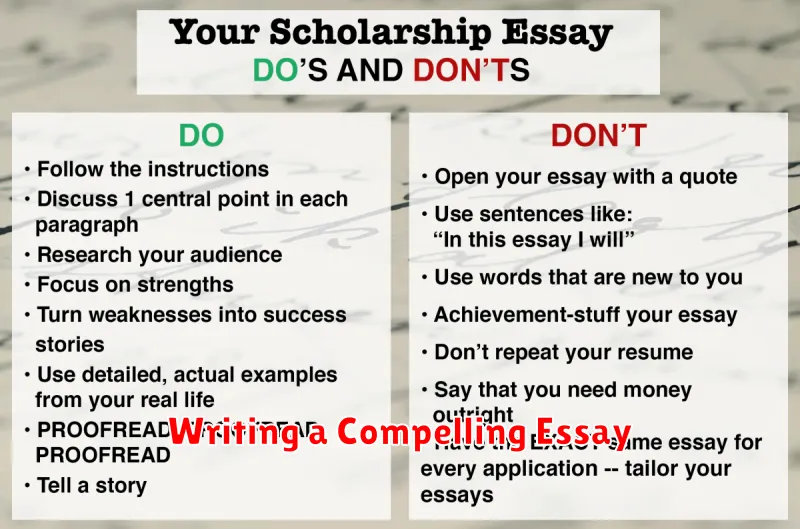Pursuing higher education abroad is a dream for many, but the financial burden can be a significant obstacle. For international students, scholarships offer invaluable opportunities to fund their academic journey. This comprehensive guide explores the process of how to apply for scholarships as an international student. We’ll delve into effective strategies for finding scholarships for international students, preparing a compelling application, and ultimately, increasing your chances of securing funding for your studies. From understanding the different types of scholarships available to mastering the art of crafting a winning application, this article will equip you with the necessary tools to navigate the scholarship application process successfully. Whether you are seeking undergraduate scholarships, graduate scholarships, or other forms of financial aid, understanding the nuances of applying as an international student is crucial.
Competition for international student scholarships is fierce, therefore, a strategic approach is essential. This article provides a step-by-step guide, outlining the key aspects of scholarship applications, including eligibility criteria, required documents, and important deadlines. We’ll discuss the importance of a well-crafted scholarship essay, strong letters of recommendation, and demonstrating academic excellence. By following the advice and insights presented here, you can significantly improve your prospects of receiving financial aid and achieving your academic aspirations. Learn how to apply for scholarships as an international student effectively and unlock the doors to a world-class education.
Types of Scholarships Available
Merit-based scholarships are awarded based on academic excellence, talents, skills, or other achievements. These scholarships often consider factors like GPA, standardized test scores, leadership roles, and extracurricular involvement.
Need-based scholarships are awarded based on the financial need of the applicant. Students applying for these scholarships typically need to provide documentation of their family’s income and assets.
Country-specific scholarships are offered by governments or organizations to students coming from specific countries. These scholarships aim to support students from developing nations or foster international relations.
Subject-specific scholarships target students pursuing a particular field of study, such as engineering, science, or the arts. These scholarships may be offered by universities, professional organizations, or private foundations.
University-specific scholarships are provided by individual universities to attract and support international students. These scholarships can vary widely in terms of eligibility criteria and award amounts.
Private scholarships are offered by corporations, foundations, and individuals. These scholarships may have specific requirements related to the donor’s interests or goals.
Where to Search for Opportunities

Finding the right scholarship requires a proactive approach. Explore various avenues to discover potential funding sources. Begin your search with your home country; many governments offer scholarships for students pursuing education abroad.
Next, research the universities you are applying to. Most institutions list scholarship opportunities specifically for international students on their websites. Pay close attention to eligibility criteria and deadlines.
Online scholarship databases are also valuable resources. These platforms compile listings from various sources, allowing you to filter by field of study, country of origin, and degree level. Finally, consider contacting educational consultants or cultural exchange organizations in your region, as they may have access to specialized scholarship information.
Preparing Strong Application Materials
Strong application materials are crucial for scholarship success. Carefully prepare each component to showcase your qualifications and stand out from other applicants.
Transcripts: Ensure your academic records are officially translated and demonstrate a strong academic performance. Some scholarships may require specific grading scales or certifications.
Recommendation Letters: Request letters from teachers, professors, or mentors who can speak to your academic abilities, character, and potential. Provide them with ample time and information to write a compelling recommendation.
Standardized Test Scores: Many scholarships require standardized test scores like the TOEFL or IELTS (for English proficiency) and SAT/ACT (for undergraduate programs). Research specific requirements and strive for competitive scores.
Essays/Personal Statements: This is your opportunity to showcase your personality, experiences, and aspirations. Tailor your essays to each scholarship, highlighting relevant skills and experiences. Clearly articulate your goals and explain how the scholarship will help you achieve them.
Curriculum Vitae/Resume: A well-organized CV or resume is essential for showcasing your accomplishments, extracurricular activities, and work experience. Keep it concise, relevant, and easy to read.
Writing a Compelling Essay

The essay is often the most critical part of your scholarship application. It’s your chance to demonstrate your personality, skills, and qualifications beyond grades and test scores. A well-written essay can significantly impact your chances of securing a scholarship.
Understand the Prompt: Before you begin writing, carefully analyze the essay prompt. Identify the key themes and ensure your essay directly addresses them. A clear understanding of the prompt is crucial for a focused and effective response.
Structure is Key: Organize your essay logically with a clear introduction, supporting paragraphs, and a concise conclusion. A structured approach enhances readability and ensures your points are presented effectively.
Highlight Your Strengths: Use specific examples to showcase your achievements, skills, and experiences. Quantify your accomplishments whenever possible to add weight to your claims. Focus on experiences relevant to the scholarship’s objectives.
Proofread Carefully: Errors in grammar and spelling can detract from your message. Thoroughly proofread your essay and consider having someone else review it for clarity and accuracy. A polished essay reflects attention to detail and professionalism.
Getting Letters of Recommendation
Letters of recommendation are a crucial part of your scholarship application. They provide third-party validation of your skills, abilities, and character. Choose recommenders who know you well and can speak to your strengths.
Who to Ask: Consider professors, academic advisors, or supervisors who have directly observed your academic or professional work. Ensure they can attest to your qualifications for the scholarship.
What to Provide: Give your recommenders ample time (at least 4 weeks). Provide them with your resume or CV, a list of the scholarships you are applying for, and the scholarship essays or statements of purpose you have written. This allows them to tailor their letters effectively.
Follow Up: Politely follow up with your recommenders to confirm they have submitted the letter. Express your gratitude for their support.
Understanding Deadlines and Requirements
Meeting deadlines and fulfilling all requirements are crucial for a successful scholarship application. Missing a deadline or failing to provide necessary documents will almost certainly disqualify you from consideration.
Deadlines: Each scholarship program has its own specific deadline. Carefully note these dates and work backward to create a personal timeline. Begin the application process well in advance to avoid last-minute rushes.
Requirements: Requirements vary by scholarship program. Common requirements include academic transcripts, letters of recommendation, standardized test scores (e.g., TOEFL, IELTS), essays, and proof of financial need. Thoroughly review the specific requirements for each scholarship you apply for and ensure you gather all necessary materials.
Create a checklist to track your progress and ensure you don’t overlook any vital components. This will help you stay organized and submit a complete and polished application.
Avoiding Scholarship Scams

Unfortunately, scholarship scams exist and target students seeking financial aid. Be vigilant and take precautions to protect yourself from fraudulent schemes.
Key red flags to watch out for include:
- Guaranteed scholarships: Legitimate scholarship providers rarely guarantee awards.
- Upfront fees: Never pay to apply for a scholarship.
- Unsolicited offers: Be wary of unsolicited scholarship offers, especially those that seem too good to be true.
- High-pressure tactics: Avoid organizations that pressure you to apply immediately.
- Requests for personal financial information: Legitimate scholarship providers will not ask for your bank account or credit card details during the application process.
Protect yourself by thoroughly researching any scholarship opportunity. Verify the organization’s legitimacy through official websites and reputable sources. If something feels off, trust your instincts and move on.

